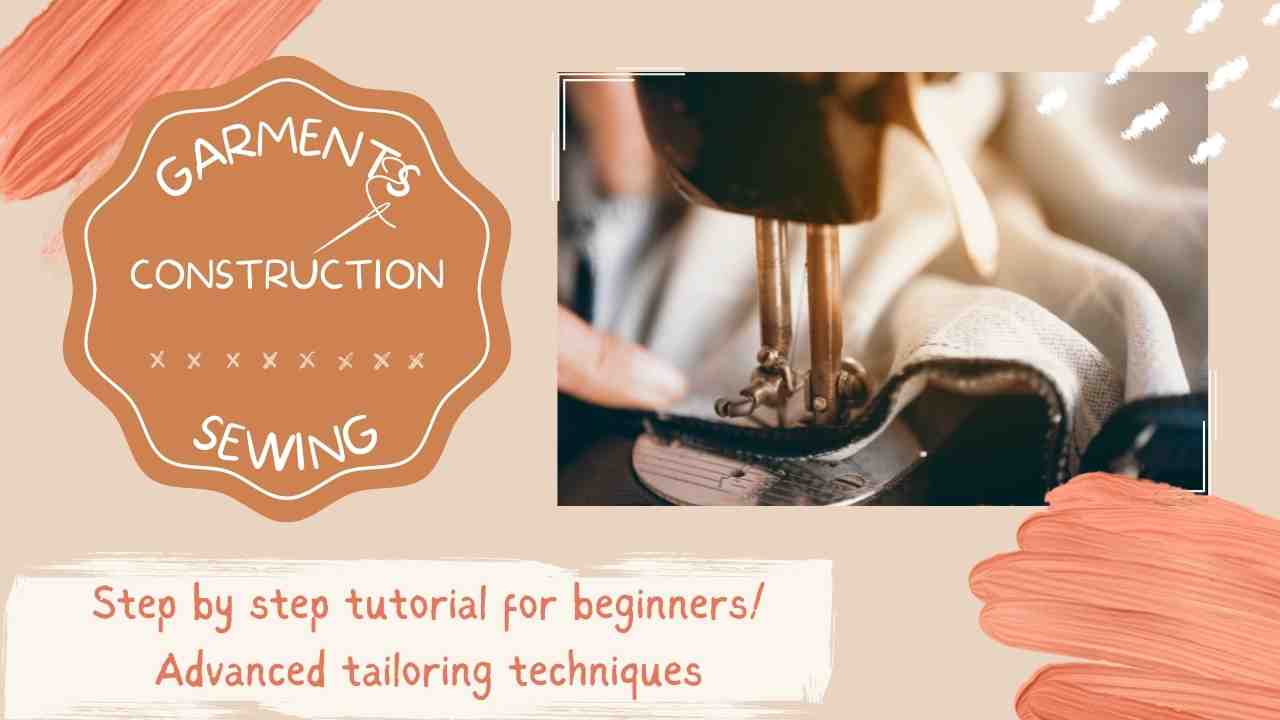Discover the world of fashion with Disha Fashion Institute. Our 1 Year Fashion Designing Course offers a comprehensive syllabus and a hassle-free admission process. Unlock your creative potential and shape your future in this exciting industry.
Admission Procedure for 1 Year Fashion Designing Course
- Feel free to request a complimentary demo live class before finalizing your admission
- Additionally, you have the option to complete the free fashion designing foundation course to obtain an initial understanding prior to starting the paid course. Please note that the free course does not include live classes
- Proceed with the Payment Admission Fee
- Fill in and submit the admission form
- Contact us to schedule your live classes and gain access to the course materials
All relevant links are given below
Fashion Design Foundation Course(Free)
1 Year Fashion Design Course Syllabus
If you want to attend a Live Demo class, then please click on the button above to join our WhatsApp group. In the group, we will share the schedule and link for the next demo class. We conduct demo classes every week. Kindly install Google Meet on your phone.
1 Year Fashion Designing Course Fee
| Cost Breakdown | Amount |
|---|---|
| Admission Fee | 2000/- |
| Monthly Fee(1st Semester) | 1000/- |
| Monthly Fee(2nd Semester) | 1600/- |
| Final Exam & Certification | 2400/- |
Table of Content
Teaching Methodology
Our 1 year Fashion Designing Course incorporates a dynamic teaching methodology. The classes are efficiently managed through our state-of-the-art learning management system. Upon enrollment, you will receive exclusive access to our comprehensive online course material, accessible from your mobile, computer, or laptop.
In addition to the online resources, we provide live classes. These live classes can be conducted in two different formats: online classes or classroom training. For online classes, you can participate from anywhere using Google Meet. If you prefer a more immersive learning environment, we offer classroom training at our institute located in Kolkata.
Our comprehensive 1 year Fashion Designing Course Syllabus covers a wide range of topics essential for success in the fashion industry. From the history of fashion to the latest trends, you'll explore everything you need to know. Gain insights into fabric types and selection, as well as the basics of design and advanced techniques such as patternmaking and draping. This article provides an overview of the course, giving you a solid foundation to become a successful fashion designer. Let's dive into the exciting world of fashion together!
1 Year Fashion Design Course Syllabus
The syllabus of the 1 year Fashion Designing Course has been divided into two parts i.e. two semesters.
- First Semester - Textile Designing
- Second/Last Semester - Fashion Designing and Garments Construction
First Semester - Textile Designing Syllabus
During the first semester of our syllabus for the 1 Year Fashion Designing Course, you will delve into the fascinating world of textile design. Textile design plays a crucial role in the realm of fashion, as it adds visual interest and texture to garments. We will guide you through the textile designing syllabus, where you will gain hands-on experience in various techniques such as tie and dye and block printing. By the end of this six-month period, you will have mastered these skills, preparing you for the next phase of garment construction in the second semester.

Introduction to Textiles and Color Theory
- Color Theory in Fashion Design
- Color Harmony in Fashion Design
- What is Fibre
- Types of Fibre
- Fibre to Fabric
- Characteristics of Different Types of Fabric
Textile Drawing
- Types of brushes and their uses
- Basic use of different types of brushes
- Textile Drawing
Textile Printing
- Basic Fabric Painting
- Vegetable Block Printing
- Wooden Block Printing
- How to do Tie and Dye
- Different types of tie and dye based on folding, twisting, crumpling, and pleating process
- Turmeric tie and dye
- Chemical tie and dye
- Natural tie and dye
- The step-by-step batik printing process
- Stencil printing process
- Eco printing with the hammer
- Screen printing
- Digital printing, image transfer
- Indian Traditional Textile Design


Ornamentation of Garments
- Fabric manipulation
- Applique work
- Aari work
- Beadwork
- Flower design
Second/Last Semester - Fashion Designing and Garments Construction
In the second semester of our syllabus for the 1 year Fashion Designing Course, you will delve into key areas such as Illustration, Elements of Fashion Designing, Principles of Fashion Design, Body Measurement, Draping, and Garment Construction. This semester's syllabus offers a quick overview, enabling you to plan your studies effectively and grasp the topics you will cover. Designing garments goes beyond fabric selection; it involves creating the perfect design to complement those fabrics. Fashion illustration, Elements of Fashion Designing, Principles of Fashion Design, body measurement, and garment construction form crucial foundations in the field of fashion design. By understanding these fundamentals, you will be well-equipped to excel in this creative discipline.
Introduction to Fashion Designing
- Elements of Fashion Design
- Principles of Fashion Design
- Fashion Trends
- Fashion Cycle
- History of Fashion Designing
Textiles and Color Theory Revisited
- Protein Based Fibres
- Plant or Cellulose Based Fibres
- Man Made Fibres
- Fabric Selection
- Color Psychology
- Color Theory & its Application
Illustration
- Elementary Sketching
- Eight to Twelve Head Theory
- How to Draw the Fashion Figure

Garment Construction
- Introduction of Machinery Used for Stitching
- Basic seam and seam allowance
- Garment details - darts, pleats, gathers, tucks, plackets, facings, etc
- Types of collars
- Types of sleeves
- How to take body measurement
- Body types
- Women's size chart
- Men's size chart
- Kid's size chart
- The measurement from a garment
- Pattern making **
** If the candidate already has knowledge of basic garment construction, then the candidate will be trained according to the advanced course in dress design. If the candidate does not have any garment construction knowledge, then he/she will be trained according to the syllabus of the basic tailoring course. Please call to discuss the syllabus.
Pattern Making - Basic
- Basic body block
- Basic Trouser Block
- Toddlers Frock & Bloomer
- Traditional Dresses for Kids
- Two types of frock (Plain/Balloon/Box plated or umbrella)
- Skirt-Top
- Different types of necklines, waistlines, hemlines, collars, sleeves, cuffs, packets, and pockets
- Simple Ladies Kurta
- Salwar with belt
- Churidar with belt
- Different types of Salwar suits – 5 different patterns
- Blouse 3 Types (Simple/Cross patti/ princes/ raglan sleeves /single & double Katori)
- Designer Blouses – 4 patterns
- Petticoat two type
- Sari Making (with or Without Brooked)
- Designer Sari Making – 2 patterns
- Lehenga with Choli
- Western Top – 2 patterns
- Palazzo Pant
- Wrap Around Skirt
- Basic Shirt Block (Gents)
Garment fitting, seam allowance, fabric requirement
Fit refers to how well a garment conforms to the three-dimensional human body. A good fit is crucial to one’s satisfaction. However, it is often easier to find clothes in the right colors, prices, and styles that one likes than a well-fitted garment. The effect of a stunning design, gorgeous fabric, and exquisite workmanship is destroyed if the finished garment doesn’t fit well with the intended wearer. The topic also explains dart manipulation and seam line grading (grading for enlargement of garment size).
Garments Renovation
The concept of re-styling and re-fashioning garments
Draping
Draping is a critical skill for any fashion designer. It allows you to create unique garments that flatter the figure and showcase your personal style. In this course, we will teach you the basics and advanced techniques of draping and how you can use them to create beautiful garments.
Fashion Portfolio
As a fashion designer, your portfolio is your most important tool. It is your chance to showcase your work to potential clients, employers, and collaborators. Creating a strong portfolio can be a challenge, but it is worth the effort. We will help you to create your own portfolio. Our professional photographer and apparel designers will assist you. However, the Fashion Portfolio is optional and not included in the syllabus. This will have an additional cost and is subject to the availability of skilled professionals. Please connect with the teachers if you are interested in making your portfolio at the end of the course.



Add comment